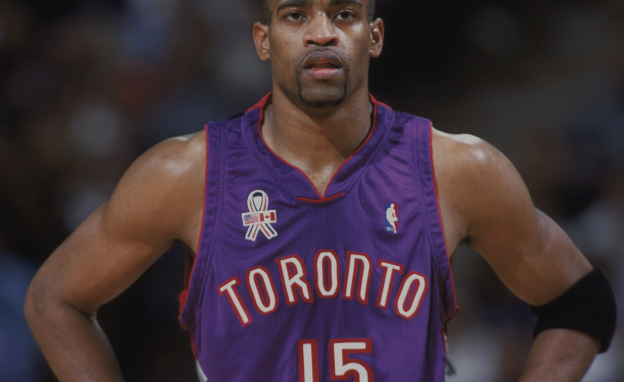Imagine gearing up for a boxing match, but instead of relying solely on intuition and the feedback of a coach, you have real-time data at your disposal. Enter the world of smart technology that’s taken a giant leap to embrace the fighters’ domain. Among all the fitness gadgets emerging in today’s high-tech world, none has caught the attention more stunningly than the smart heart-rate sensing mouthguard. As a former kickboxer myself, I can’t help but think how much this innovation would have revolutionized my own training years ago.
Why Heart-Rate Monitoring is Crucial for Fighters
For any fighter, be it in the realm of boxing, kickboxing, MMA, or any other high-intensity martial art, understanding what your body is going through in real-time can make all the difference. Traditional means of heart-rate monitoring involved awkward chest straps or wrist devices which, let’s be honest, aren’t exactly conducive to sparring or full-contact situations. The innovation of a heart-sensing instrument in a mouthguard circumvents the age-old issues of comfort and practicality.
Your heart rate gives you instant feedback. It tells you when you’re in the zone, when to push harder, and when to ease off. It ensures that you are not overtraining—one of the major pitfalls that leads to fatigue and potential injury. Monitoring heart rate is also essential for tracking improvements in cardiovascular fitness over time. For fighters, this information can optimize training, improve performance, and keep them healthy.
The Significance of a Mouthguard in Combat Sports
Anybody who’s stepped into a ring or cage knows the fundamental necessity of a mouthguard. It’s not just gear—it’s a shield, an essential piece of equipment that protects the jaw from fractures, the teeth from damage, and, importantly, reduces concussion risks. Given its role, it makes perfect sense to integrate vital technology into something fighters are already accustomed to wearing.
Transforming a standard mouthguard into a smart device is a stroke of genius. The technology does not interfere with the core function of the mouthguard and does not add significant weight or discomfort. It aligns seamlessly with the routine use of protective equipment, ensuring that fighters get enhanced safety without compromise.
How Smart Mouthguards Work
The brilliance of the smart mouthguard lies in its non-invasiveness. Inside the protective guard, sensors are nestled that can monitor the pulse in the mouth’s blood vessels. Given that the oral cavity is a prime spot for pulse detection, this method offers precision akin to—and sometimes exceeding—that of other monitoring devices. The data is then transmitted via a Bluetooth connection or a similar wireless protocol to a smartphone or another compatible device.
The ease of access to this vital data, practically in real-time, is a gift wrapped in technology for every corner-man, trainer, and fighter. Not only does this streamline how athletes receive feedback about their performance, but it also opens a host of innovative training methods to explore, backed by reliable physiological insights.
Integration with Existing Training Platforms
Most smart mouthguards sync up seamlessly with popular fitness tracking apps, integrating smoothly into pre-existing setups used by athletes and coaches. Some companies developing these mouthguards offer dedicated apps that give detailed analytics, real-time alerts, and customized dashboards made just for combat sports. This feature not only ensures a broad spectrum of usability but also creates opportunities for a fully connected training ecosystem.
With all these benefits combined, the mouthguard serves not just as protective gear but also as a digital fitness buddy offering guidance, support, and critical feedback right from within the confines of your own oral cavity.
Benefits Beyond the Immediate Ring
The benefits of using a smart mouthguard for heart-rate measurement are boundless, not just for athletes pounding it out in the sparring ring but also in the realms of medical, wellness and casual fitness sectors. Its use could extend to track overall health metrics—think stress response, hydration levels, and even fatigue—as accurately as a qualified coach’s discerning eye can guess.
Heart-rate variability, a crucial indicator of endurance and recovery capability, can help develop an athlete’s cardiovascular stability, resilience to stress, and recovery speed—all critical elements in sustaining a long and successful career in fighting sports. Moreover, easy tracking over time can help with long-term fitness objectives, giving insights into dietary, recovery, and supplemental aspects of a fighter’s lifestyle.
Embracing Technology in the Combat Sports Arena
With the rapid integration of technology into sports, the impact of these advancements has reshaped how training is approached. Historically, combat sports heavily relied on intuition, the wisdom passed through coaching lineages, and personal experience in the ring. Now, scientific data derived from technological breakthroughs provides concrete evidence to align intuition with factual insights.
While there’s an argument in preserving the raw, instinctive nature of combat sports, we can’t ignore how tech innovations like the smart mouthguard harmonize the artistry and data-driven accuracy needed for peak athletic performance. The intersection of these elements has paved the way for a future where the best athletes are both artists and selectively armed with cutting-edge tech.
The smart mouthguard also enters an evolving dialogue around athlete safety. With growing concerns about concussion and injury management in collision sports, having real-time data during practice or competition can inform timely interventions, possibly preventing more severe outcomes.
Potential Challenges and Considerations
Of course, every technological breakthrough comes with its own set of potential hurdles. The price point of such advanced equipment can often be a barrier for entry-level athletes or gym-goers. Ensuring connectivity in various sporting environments can also pose technical challenges. Organizations may need to consider the confidentiality of athlete health data, ensuring that any sensitive information remains secure.
While these considerations must be addressed, they do not overshadow the potentially transformational benefits smart mouthguards stand to offer. Working with companies to ensure affordability and addressing any technical kinks through iterative testing will be crucial as adoption grows.
In closing, it’s easy to see why this is a game-changer not just for its practical utility, but for how it bridges the gap between innovation and tradition in combat sports. The smart heart-rate sensing mouthguard stands as a testament to the power of technology not just to enhance performance, but also to secure the longevity and safety of those who dedicate themselves to the rigorous and rewarding work of fighting. As an ex-kickboxer, it makes me wish to step back into the ring—with this mouthguard at my side.



